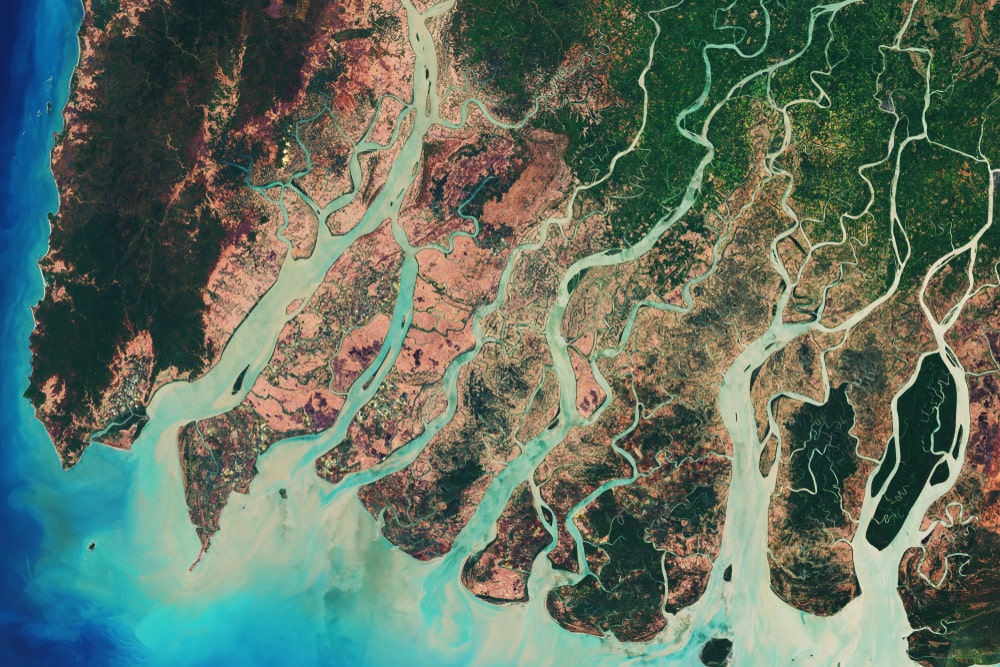
What is delta and how is it formed? You might have never thought about this, but if you grew up close to a large lake or the ocean, it’s likely that you’ve seen a delta. Deltas form at the mouths of rivers as they flow into a larger body of water like a lake or the ocean.
Deltas are great ecosystems because they are rich in biodiversity, and the sediments contain lots of nutrients. Deltas help humans produce agriculture, they protect us from dangerous storms, and they provide the earth with numerous species of animals and plants.
What Is A Delta?
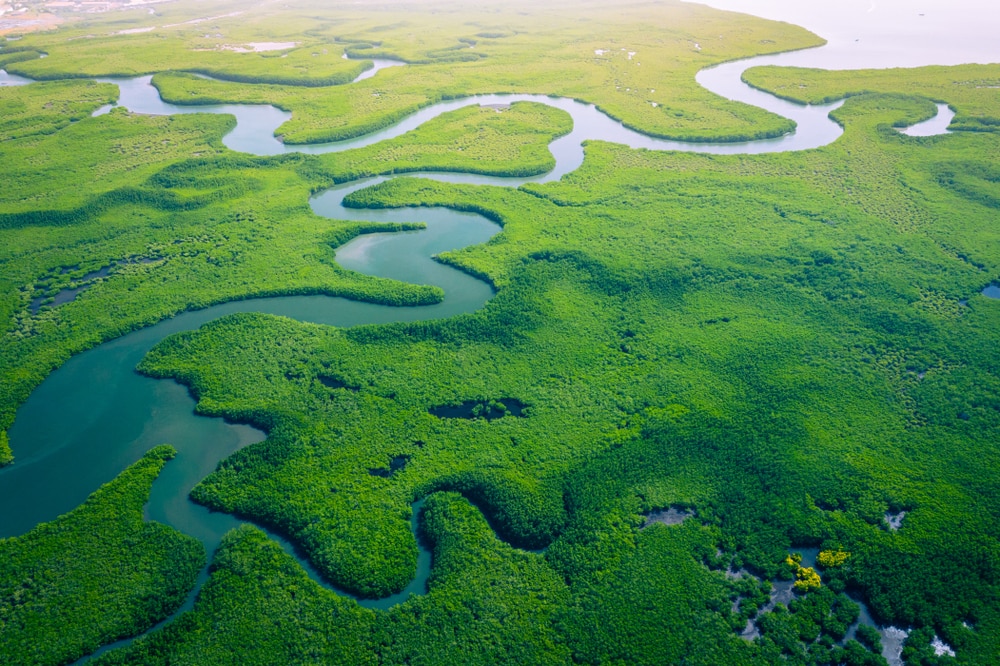
A delta is a type of wetland that develops in a low-lying plain. They can be found at the mouths of rivers, flowing into larger bodies of water – usually an ocean. In order for a delta to form, the water must be flowing slowly so that sediment can be deposited to create new landforms.
Rivers
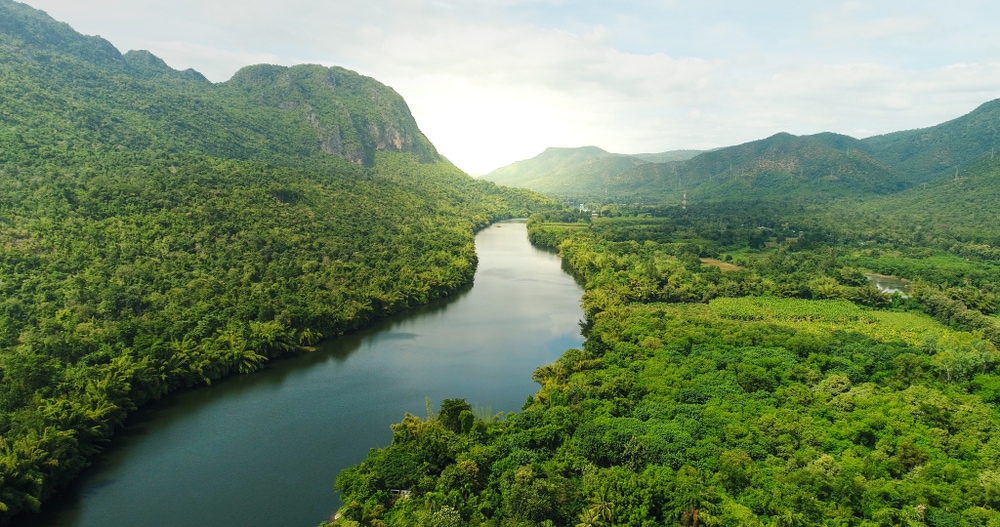
To be able to fully understand what a delta is, we also need to fully understand what a river is. Of course, we probably all think we know what a river is — a large flowing body of water — but it’s a bit more complicated than that.
A river first begins at an area of high elevation where there are large amounts of precipitation such as rain or snow. This precipitation runs downhill, or down-mountain to form small bodies of water like streams and creeks.
These small bodies of water continue to flow downward. Eventually, they will meet with other creeks or streams, becoming increasingly beggar in size. When enough of these creeks and streams have joined together, they create a large body of water that we know as a “river”.
The rivers then continue to flow downward in elevation, trying to reach other large bodies of water, such as the ocean. On the way there, rivers will sometimes combine with other rivers, creating rivers that are even larger.
Deltas
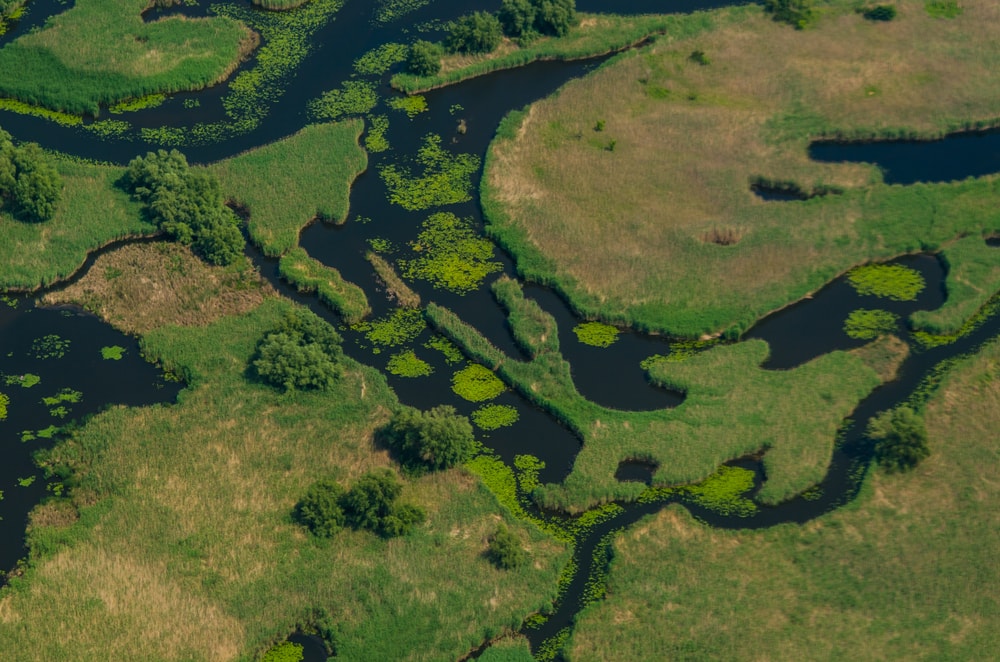
Deltas come in at the lowest elevation, where the river is ending and becoming part of the ocean, or whatever larger body of water it has flowed into.
A delta is an area where the flow of the river begins to slow down and allows for the formation of wetland areas. The slow flow allows the water and the nutrients in it to spread out and form sediment that is rich in nutrients. Deltas are capable of turning usually dry areas of land into a diverse wetland.
What Causes A Delta To Form?
What causes a delta to form is simple — it’s the traveling of a river to a larger body of water. How a delta is actually formed is a bit more complicated.
How Is A Delta Formed & Where Do Deltas Form?
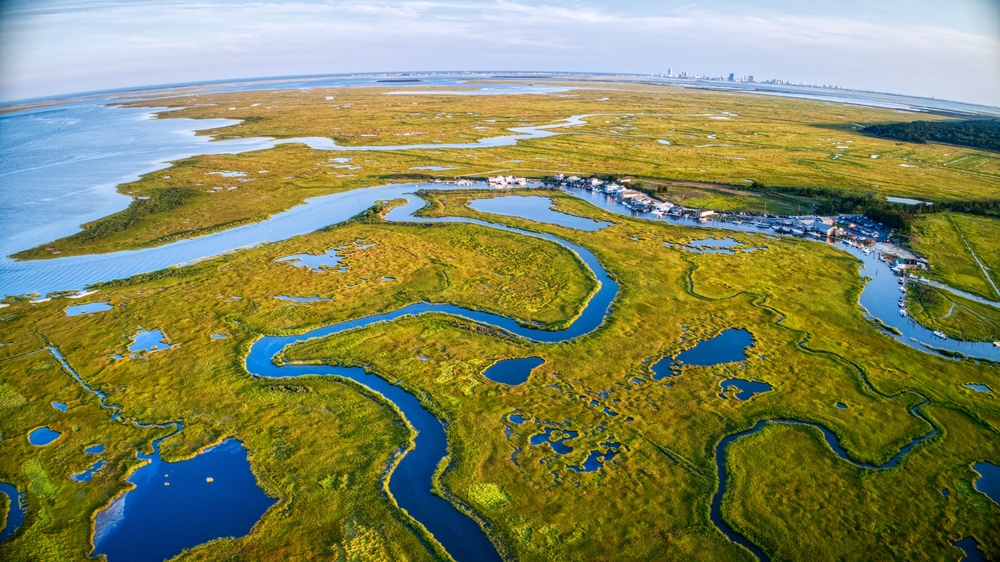
The formation of a delta does not happen overnight. It is a very slow process because it requires the water to change and form the landscape.
Rivers flow from higher elevations down to their lowest elevation where they meet a larger body of water, like the ocean. When they reach this low elevation, the water begins to slow down.
During its journey downward, the river has picked up sediment and nutrients from higher elevations and has been carrying them downward. For the most part, the river will have been moving too fast for the sediment and nutrients to deposit along the river.
Instead, the sediment continues to flow downward until it reaches the merging point of the river and the larger body of water. When the water flow slows down, the water can spread out and deposit the sediment in a wider area. Deposited sediment is referred to as “alluvium”.
Rivers often create deltas through the spread of sediment like sand, mud, silt, and gravel. At the beginning, the sediment is small and does not have much effect on the area. However, over time, the sediment settles, and is continually covered by more settling sediment.
Eventually, so much sediment builds up at the mouth of the river that it begins to seep into the larger body of water as well. As the sediment continues to build up, so does the area of land that is slowly becoming a delta.
In the right conditions, a river will form a deltaic lobe which includes a network of distributaries. When a deltaic lobe forms, the heavier and coarser sediment will settle to the bottom of the delta first, followed by the finer and lighter sediment which is carried downstream.
The River’s Influence on The Formation of Deltas
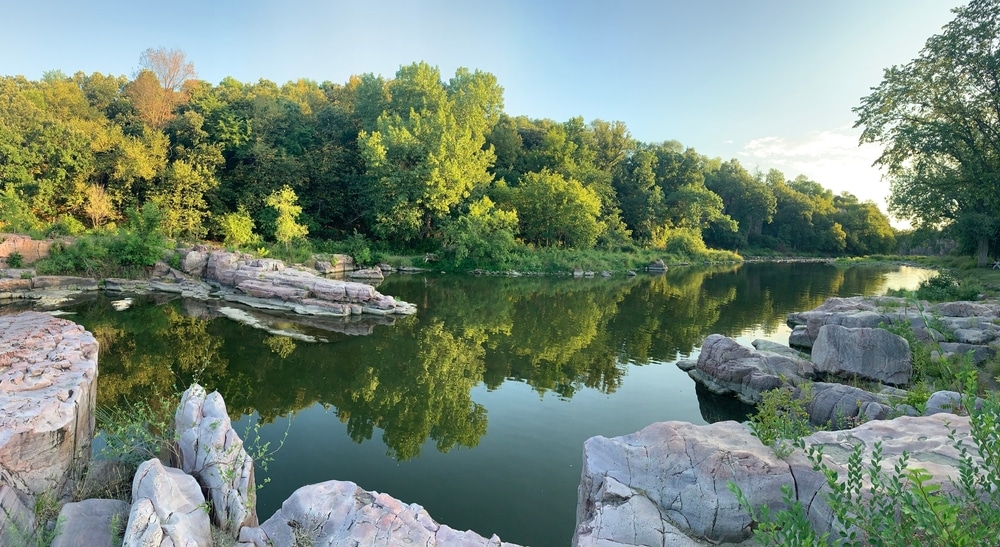
Not all deltas are formed the same way, and this is largely due to the river itself. The river’s characteristics play a large part in determining how a river delta will form.
Rivers that are larger and flow fast are more likely to carry large pieces of sediment down to the area where the delta will form. On the other hand, rivers that are slow-moving will not carry as much sediment, and the sediment is likely much smaller.
With increasing sediment, the water becomes more shallow, and eventually, you will notice that land begins to form just slightly above the water. The land does not breach the water too far, but will usually form just above sea level. The sediment will form multiple layers with the sediment, creating “beds” that create this effect.
Deltas will continue to grow and create land around the water. Still, although these landforms cause the water to slow down, it will not force it to stop.
The water that is still flowing can sometimes move across the formed land. When this happens, smaller areas of water form, creating distributaries which look like branches.
Oftentimes, a delta is divided into two parts: the subaerial part and the subaqueous part.
The subaqueous part of the delta is the section that is underwater and closest to the mouth of the river. This part of the delta is sloped more deeply than the rest, and it is also the area that has the most amount of fine sediment. This section also contains the prodelta which is the newest part of the delta and is furthest from the mouth of the river.
The subaerial part of the delta is the section that is above the water. The lower delta is most influenced by the waves and the tides, while the upper delta is influenced more by the flow of the river.
When Will A Delta Not Form?
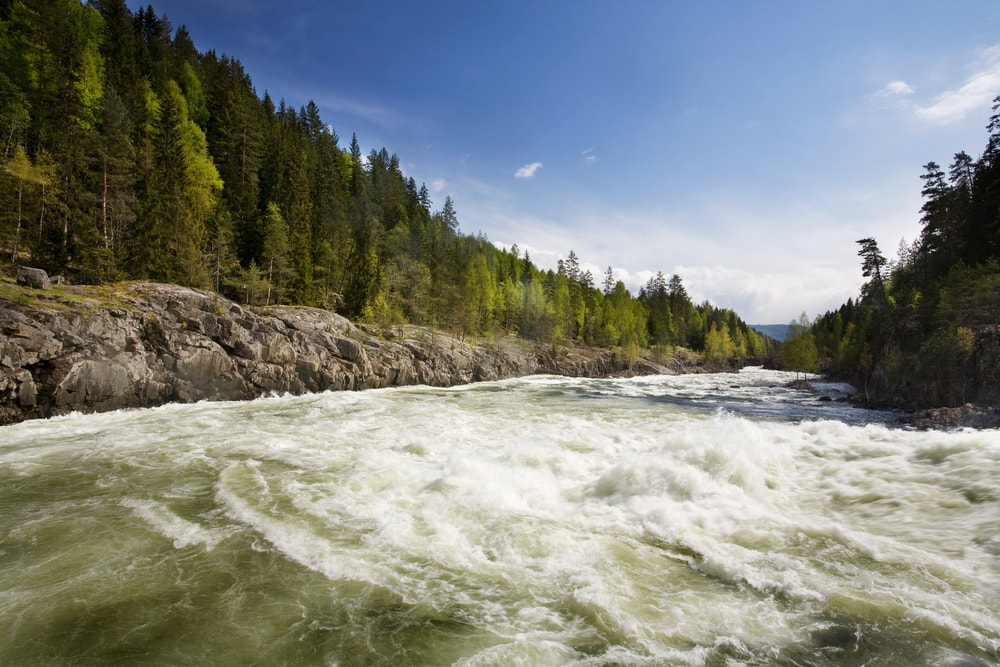
In order to form a delta, a river must be moving slowly. The slow movement of the water allows for the sediment to deposit on the bottom of the river, creating a delta landform between the river and a large body of water.
Therefore, rivers that flow quickly will never be able to form a delta. Similarly, rivers whose mouths are near an area with excessive wave action cannot form a delta. The intense waves will prevent the sediment from accumulating and creating land.
Similarly, the force of the tides can prevent sediment from accumulating and will make it impossible for a delta to form. For example, the Amazon River does not form any deltas because the tides from the Atlantic Ocean are too strong.
Delta Geography
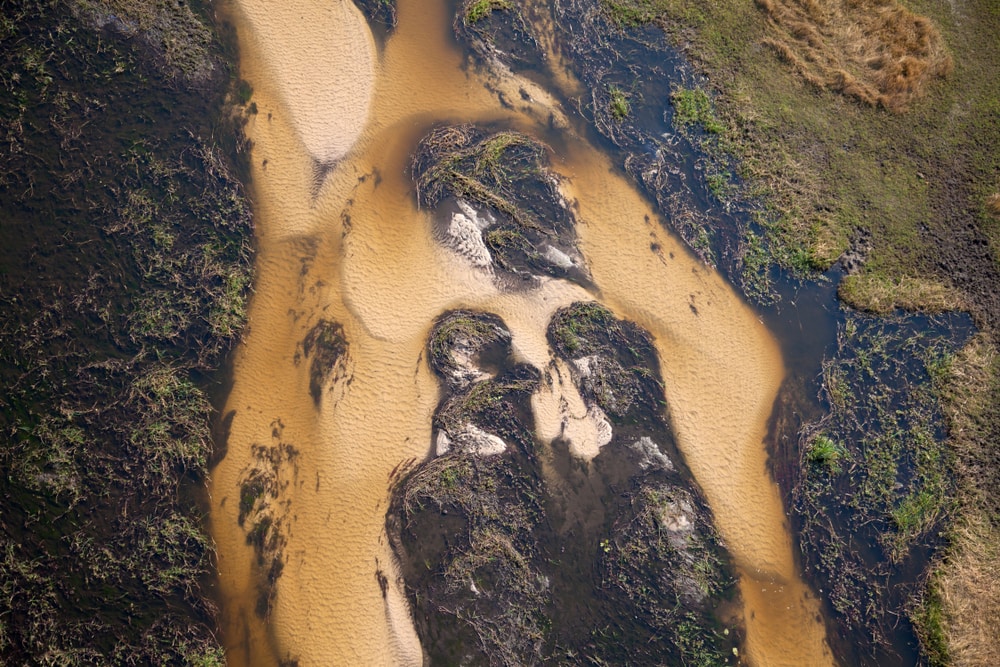
Deltas are generally made up of three different parts: an upper delta plain, a lower delta plain, and the subaqueous delta.
The upper delta plain is the area closest to the landforms. This is the spot where the land will be highest and there will be the least amount of water.
The lower delta plain is the area at the center of the delta. It is seen as a kind of merging point between the dryer upper delta plain and the wet subaqueous delta.
The subaqueous delta is the area of the delta that is closest to the larger body of water, whether that be an ocean or lake. You will usually find this area below water level beyond the shoreline.
You may also like: Types Of Landforms: From The Top Of The Globe To The Depths Of The Sea
The 9 Different Types Of Deltas
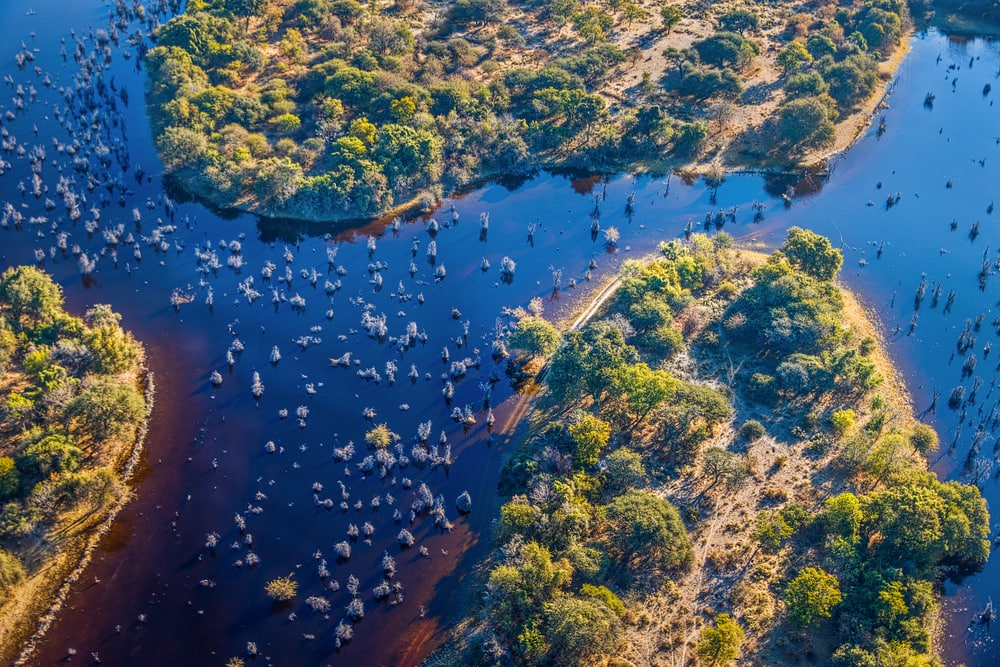
A river delta is not a universal formation. They can look very different depending on where they begin, the geology of their location, the climate of their location, as well as the activity of the ocean or the lake it’s flowing into. Therefore, a river delta found in the United States may be quite different from one found in Asia.
How a river delta is characterized generally depends on what contributes to the delta’s composition: the river, the waves, and the tides. Another way to classify them is by how they are shaped.
Deltas are also divided into an upper delta plain or a lower delta plain. Upper delta plains generally consist of things like lagoons, bogs, floodplains, and stream channels. Lower delta plains are found closer to tidal zones where the water is brackish. These commonly form salt marshes.
1. Wave-Dominated Delta
A wave-dominated delta is generally formed through the erosion of land by waves. The strength and push of the waves determines the amount of sediment that is deposited, as well as where the sediment will be deposited. In this way, the waves determine the overall size and shape of the delta.
Interestingly enough, river deltas actually got their names from the Greek letter, delta (Δ). Wave-dominated deltas are usually shaped like a triangle, similar to the Greek letter.
2. Tide-Dominated Delta
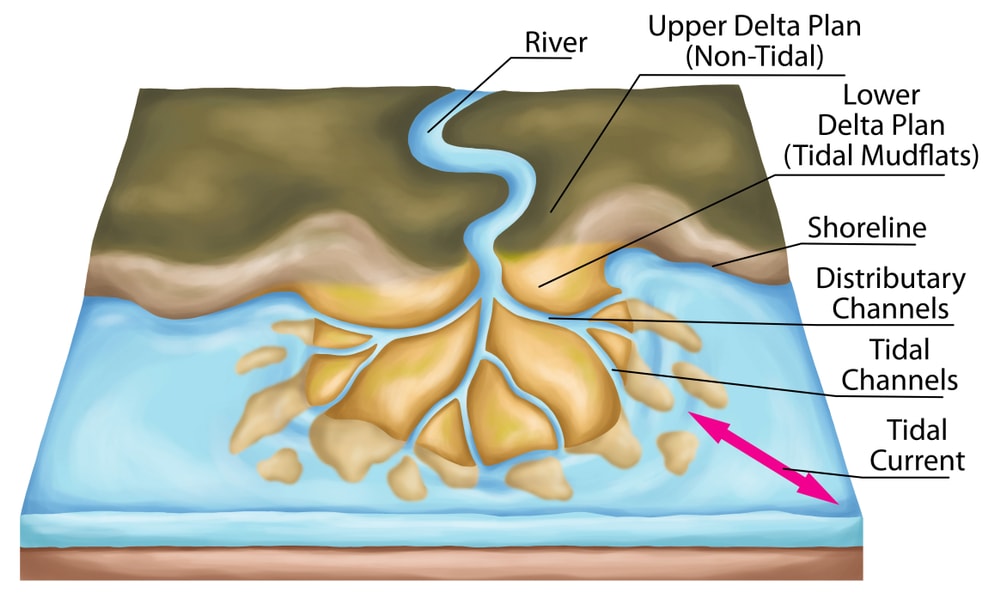
Similarly, a tide-dominated delta is created by the tides. Usually, these kinds of deltas have a lot of swelling, so the water often flows over the land forms. In other words, there is a wide discrepancy between the amount of water in the low tide versus the high tide. This causes distributaries to be formed, creating a delta with a branch-like structure.
3. Gilbert Delta
Gilbert deltas are steeper than the others and are formed by the deposits of coaster materials. It is not often that these deltas will be formed by the ocean, although it’s possible. Instead, these deltas are usually formed in mountainous areas by a lake.
4. Inland Delta
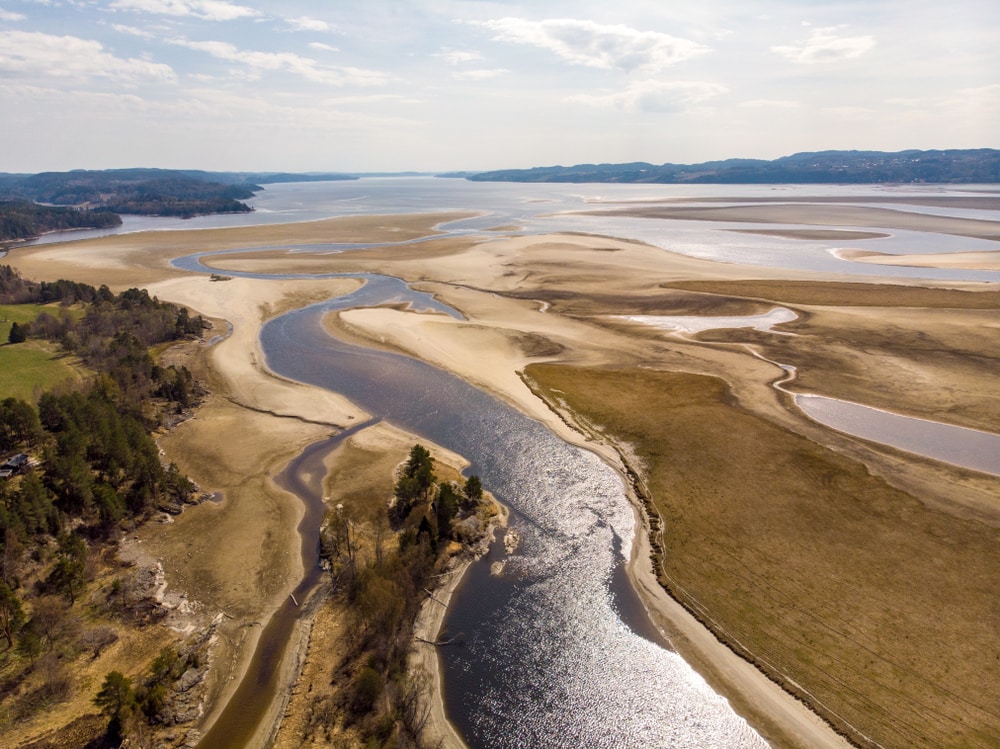
Inland deltas, as the name suggests, are formed inland. This typically occurs in valleys where the river branches off in several directions but rejoins the river downstream. An example of this is an estuary. These deltas are also not present near the ocean but instead are found most often on former lake beds.
5. Cuspate Delta
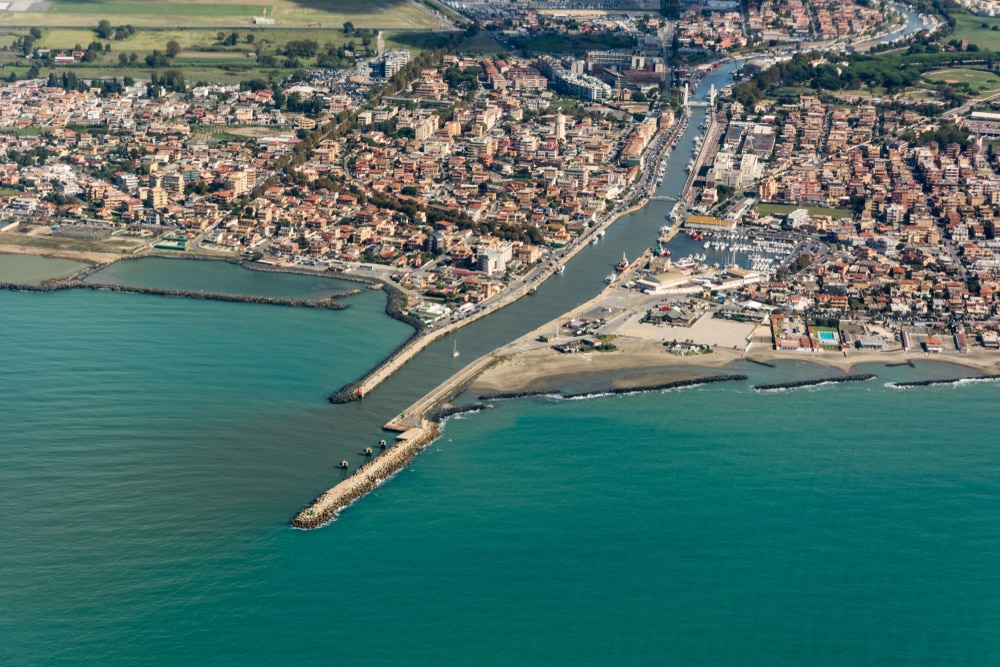
A cuspate delta is formed when sediment is deposited along a straight shoreline. This occurs because of the strong push of the waves. The waves cause the sediment to spread outwards, creating a shape that looks like a tooth.
6. Arcuate Delta
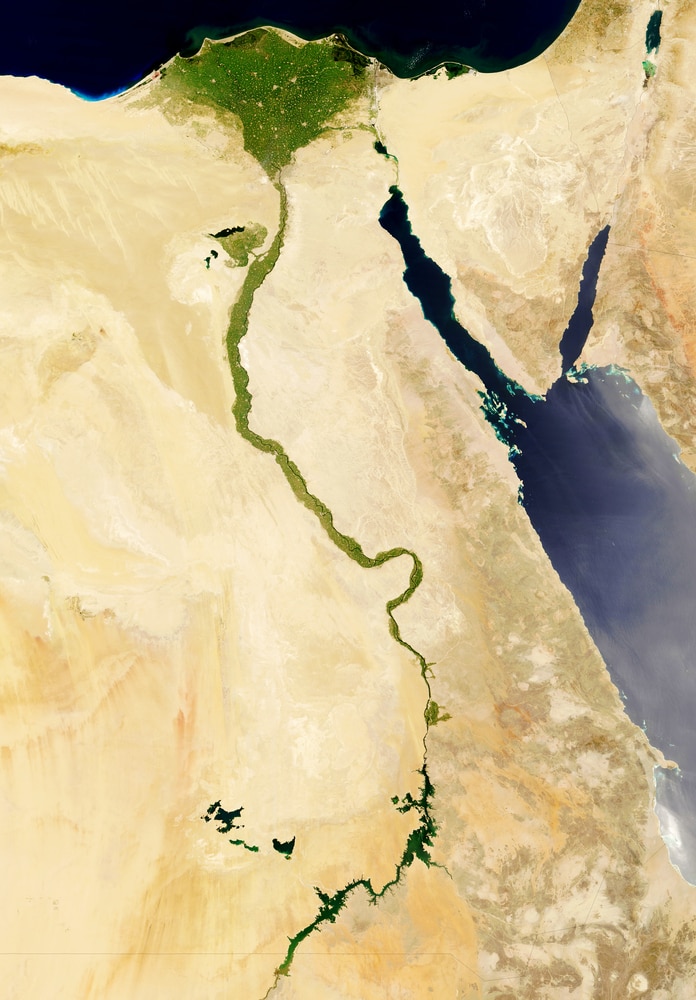
An arcuate delta is shaped like a fan. The portion of the “fan” that appears wider will face toward the water because the delta is formed by coarse sediments.
7. Bird-Foot Delta
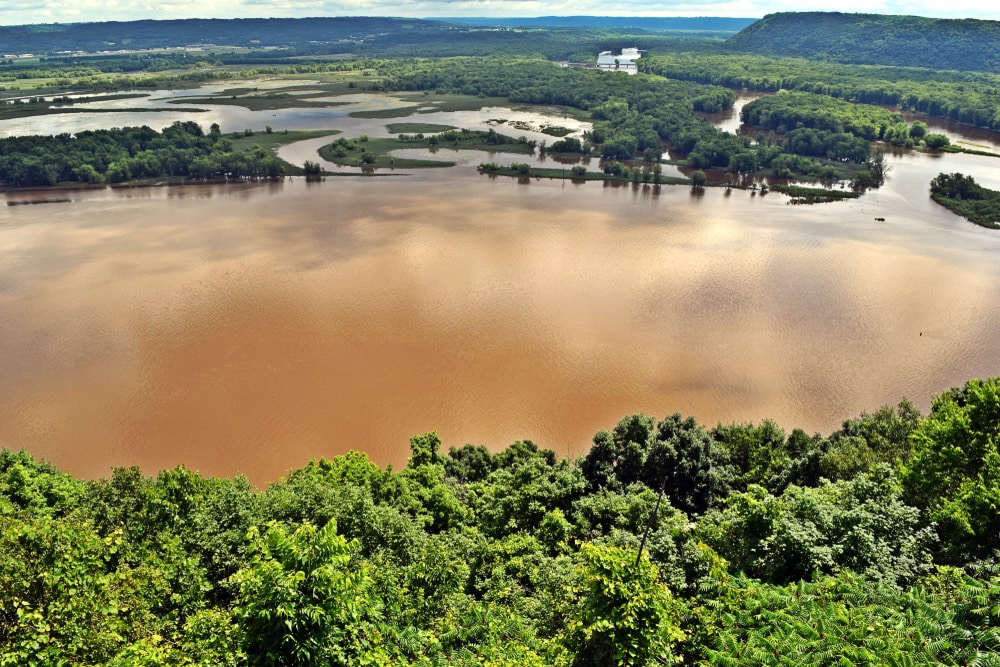
These deltas are often referred to as bird-foot delta because the water branches off in a way that looks like a bird’s foot. These types of deltas are more commonly formed when there is not much wave power, and the flow of the river is stronger. This is why they are not as commonly formed around oceans.
8. Inverted Delta
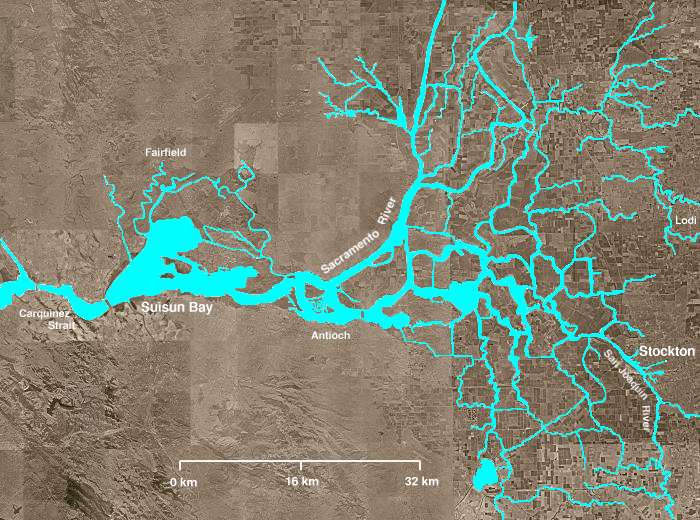
An inverted delta is quite different from the others because the distributaries are focused inland. Only a single stream runs out to the ocean or larger body of water. These deltas are extremely rare.
9. Abandoned Delta
An abandoned delta occurs when a river creates a new channel, leaving another channel to dry up. This process is called avulsion and occurs when sediment build-up increases while the overall slope of the channel decreases.
This allows the channel to overflow or find a better route to the larger water body, causing a current delta to dry up.
You may also like: 47 Types Of Bodies Of Water: Pictures And More
Delta Examples
There are many deltas found throughout the world, and you’ve likely heard of many of them. Here are some delta landform examples:
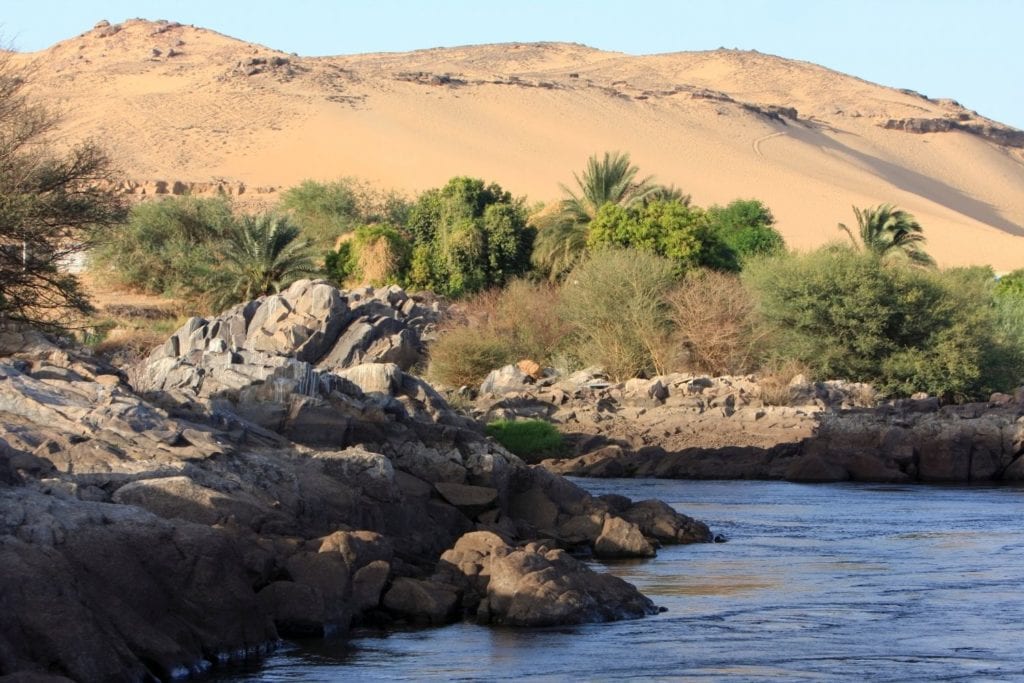
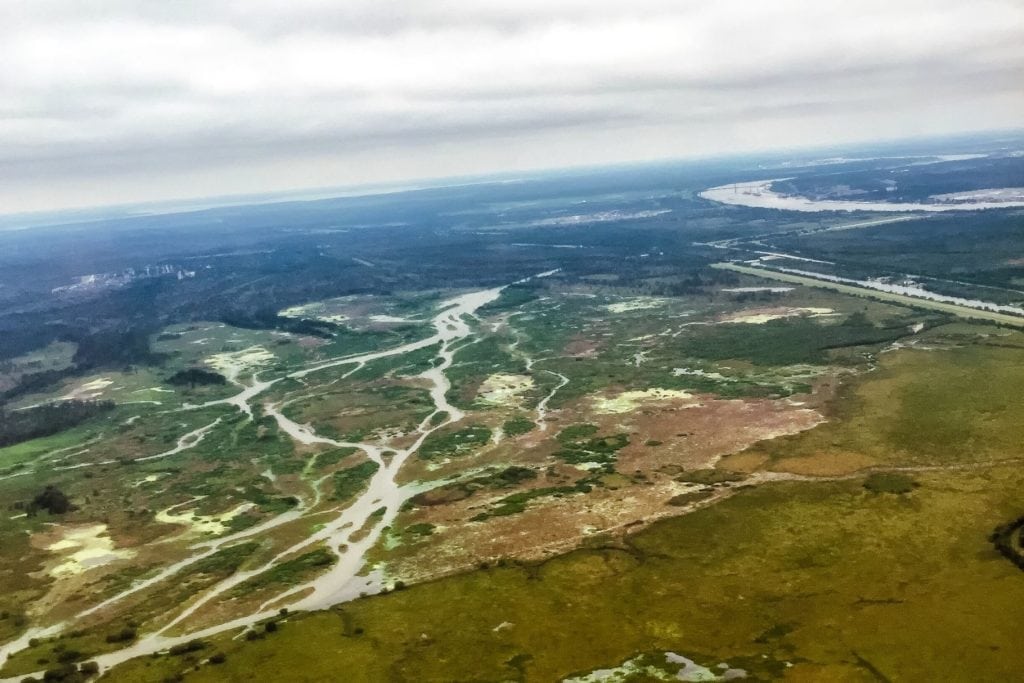
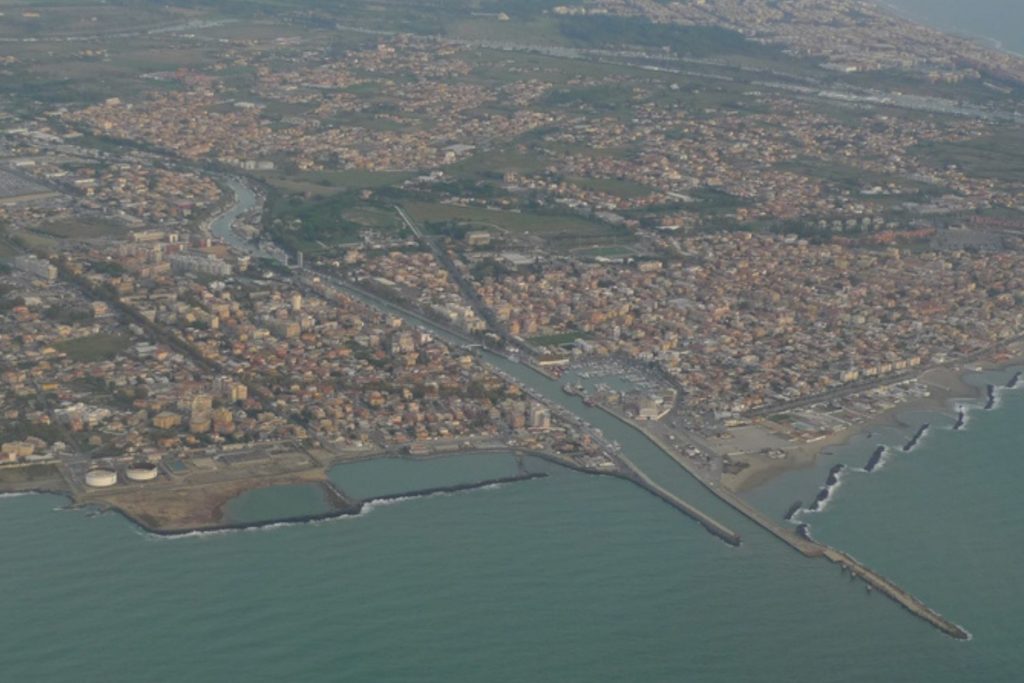
- The Nile Delta: an arcuate delta
- The Mississippi Delta: a bird’s foot delta
- The Tiber Delta in Italy: a cuspate delta
You may also like: What Causes Tides? All About Tides Explained
Facts About Deltas
Why Are Deltas So Important To The Environment?
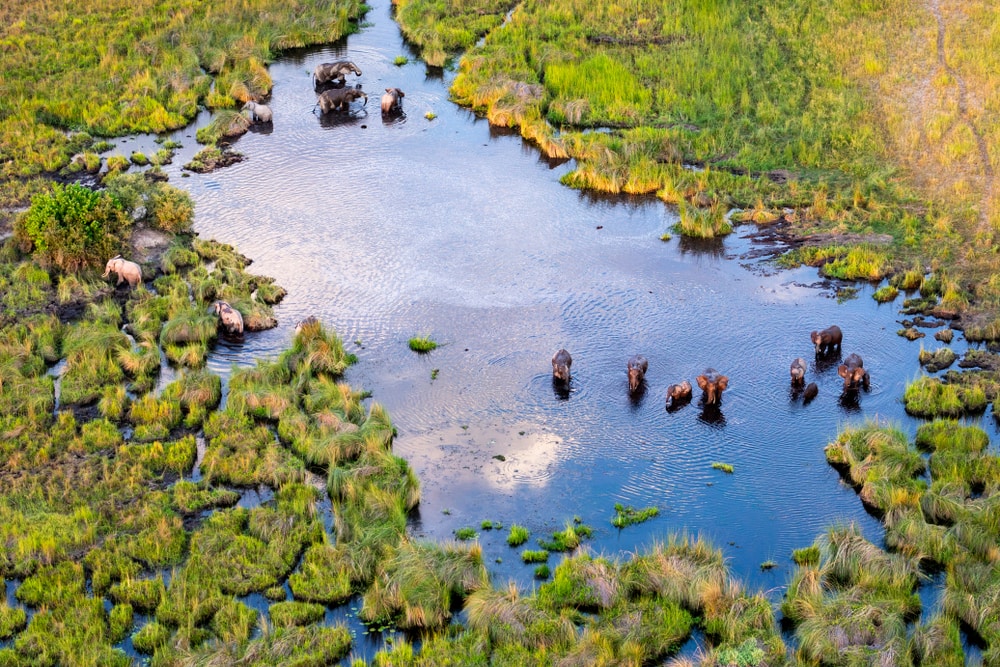
River deltas have always been one of the most important ecosystems on the planet because of their incredible biodiversity. The richness of the land and water allows many species of animals, fish, plants, and insects to thrive here.
Many of the species that are found in river deltas are threatened or endangered. It’s incredibly important that we protect delta habitats so that we can maintain their rich biodiversity in the future.
Deltas can also reduce the amount of pollution that is going into our larger bodies of water, like the ocean or lakes. Deltas work like a filter, getting rid of most of the bad pollutants found in the river water as it makes its way through the delta and out to open water.
Why Are Deltas Important To Humans?
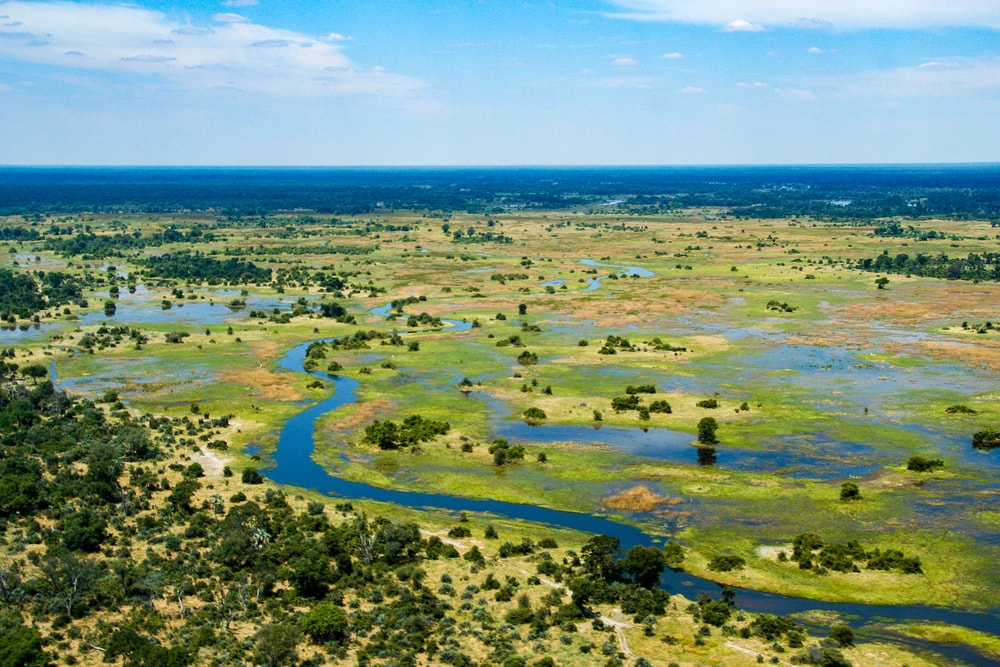
River deltas have been used by humans for centuries because they are characterized by very fertile soil. The sediments that are deposited by the river carry lots of nutrients that now make up the delta.
In the past, many ancient civilizations formed their homes along deltas. One such example is the Nile river, where people learned to live with the flooding cycles of the delta in order to reap the benefits of the fertile soil.
Today, we continue to take advantage of the fertile soil produced by river deltas. Some of the best farmland has access to river deltas. For example, the Sacramento-San Joaquin delta in California is used for agriculture. In fact, this area is extremely productive and diverse, helping the growth of many kinds of plants.
Deltas and other wetlands are also wonderful for humans and wildlife alike because they act as buffers for huge storms. Wetlands are able to swell and adapt to large surges of water, so they often take the brunt of storms like hurricanes. Without wetlands like deltas, the full force of the storm is able to wreak havoc on our cities and towns.
We also take advantage of the sediment deposits to use for infrastructure. Many times, sand and gravel is extracted from deltas to be used to create roadways and buildings.
You may also like: 15 Different Types Of Terrain You Should Know About: Complete Guide
Alluvial Fans VS Deltas
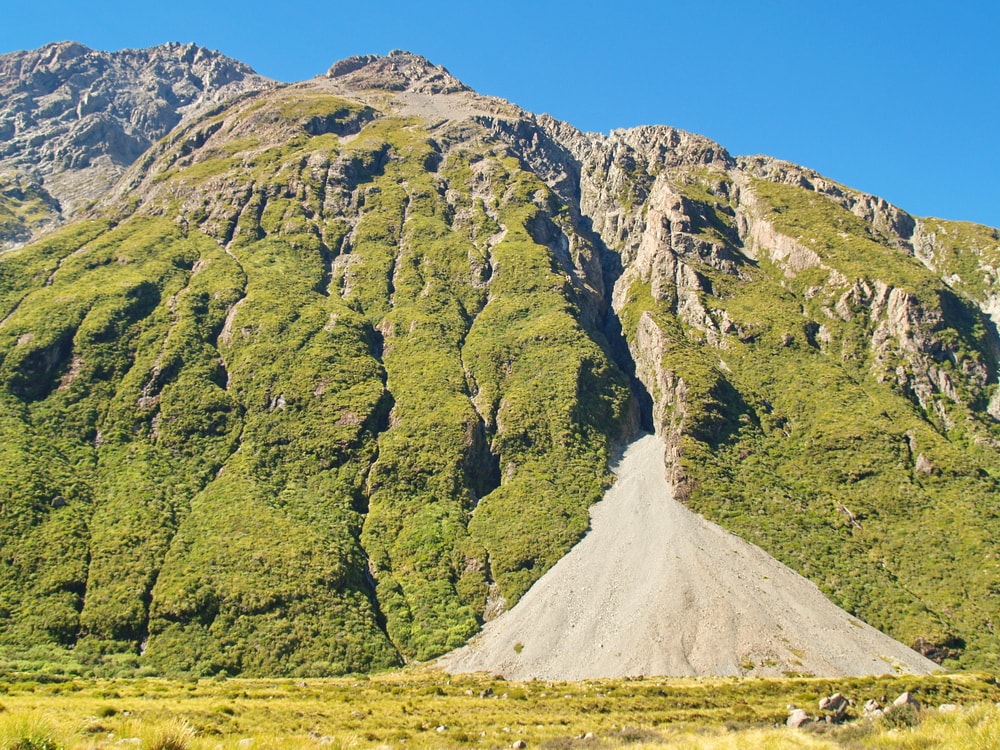
Many times, people confuse river deltas with alluvial fans that are very similar bodies of water. Both alluvial fans and deltas are made of layers of sediment. However, deltas create these sediment layers with the help of a river, while alluvial fans are formed on dry land. They are most common at flat areas at the foot of a mountain, or at the base of a canyon.








